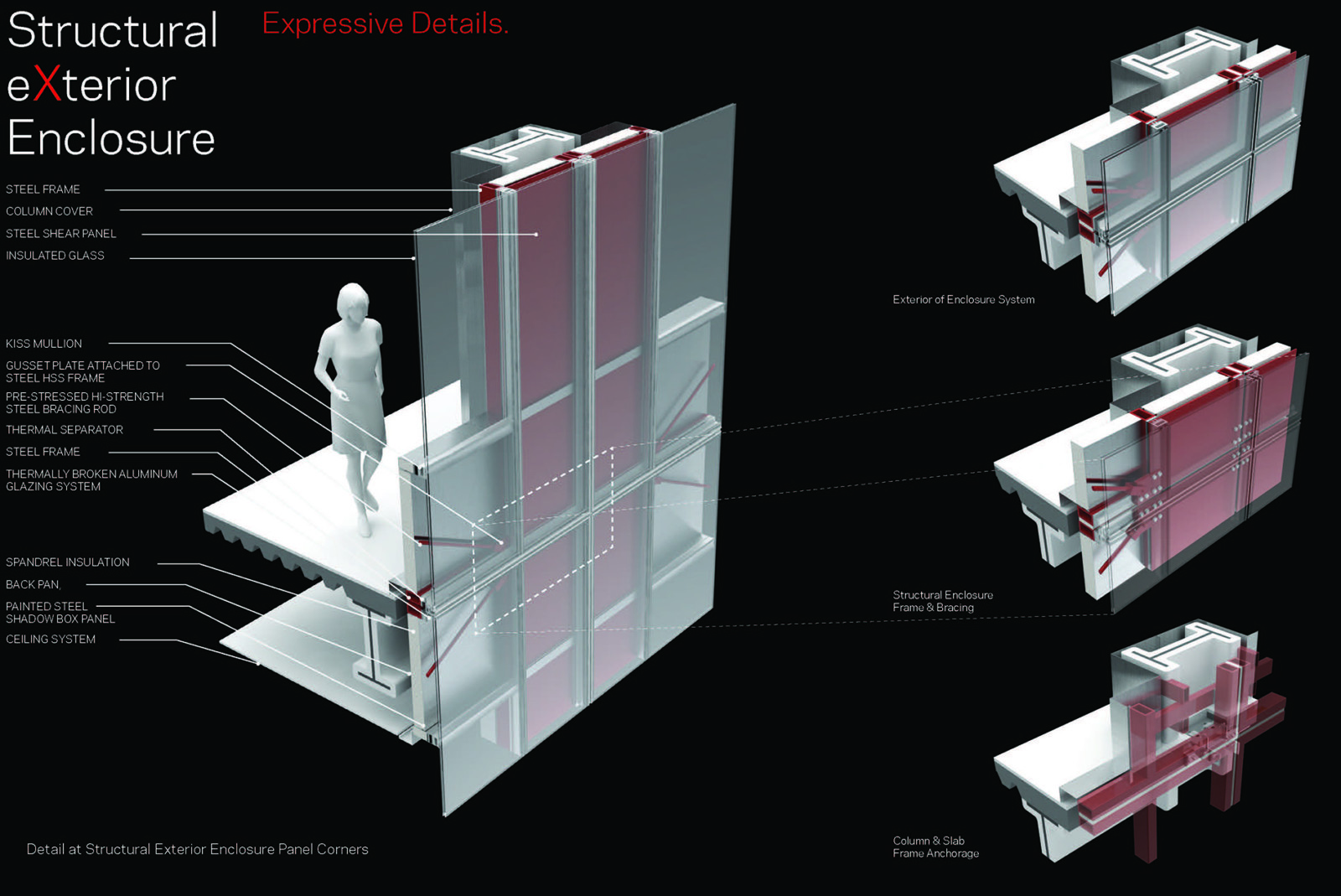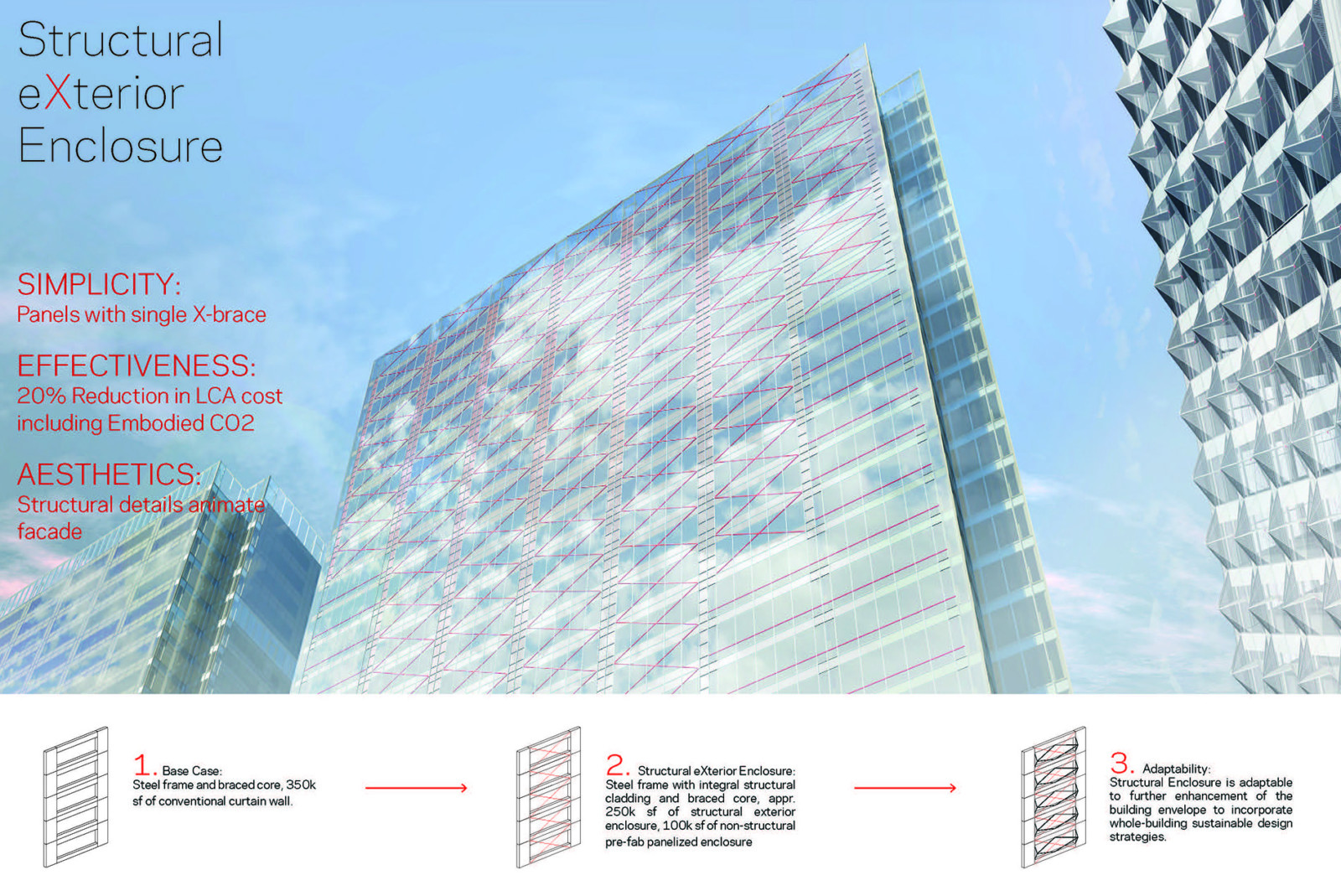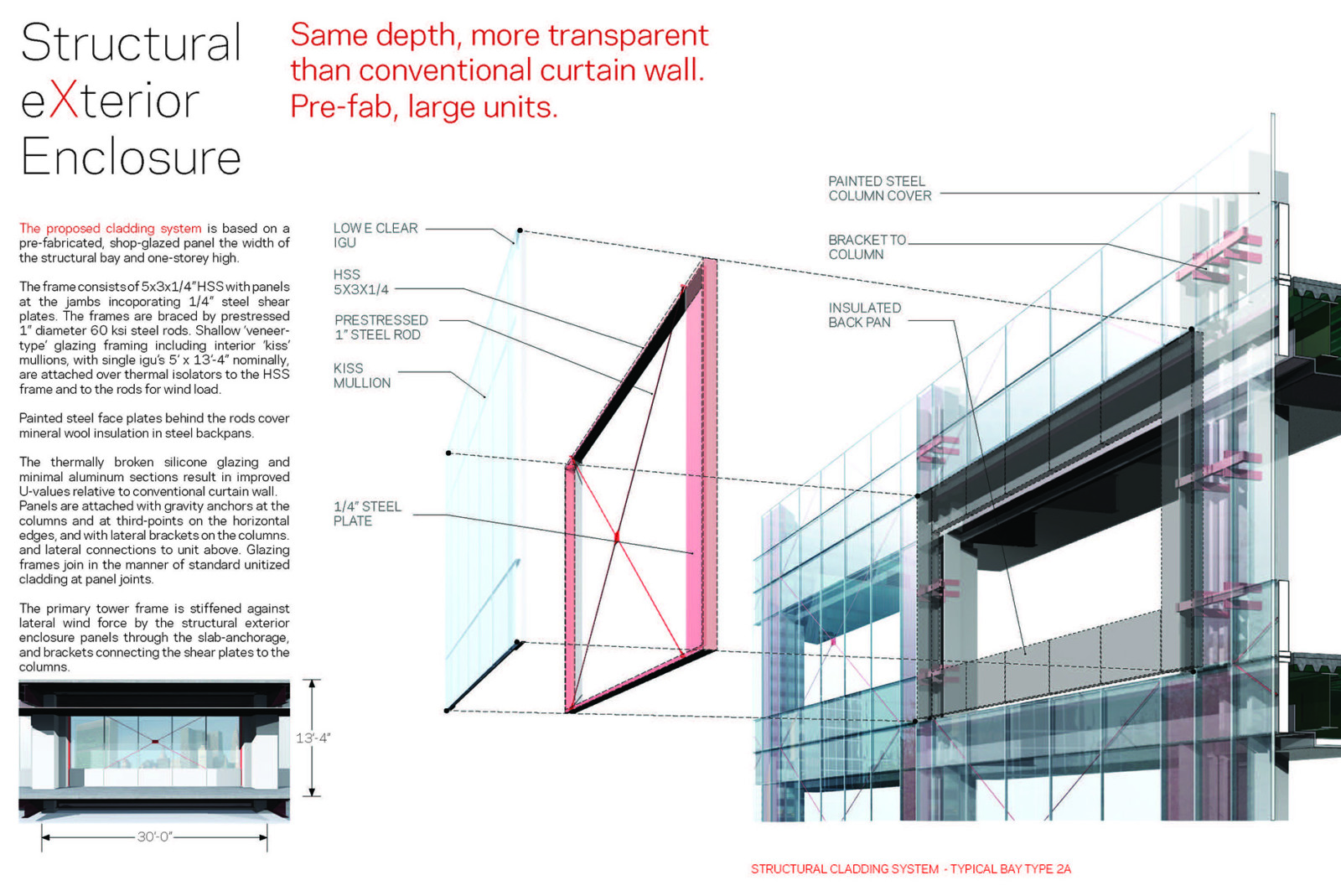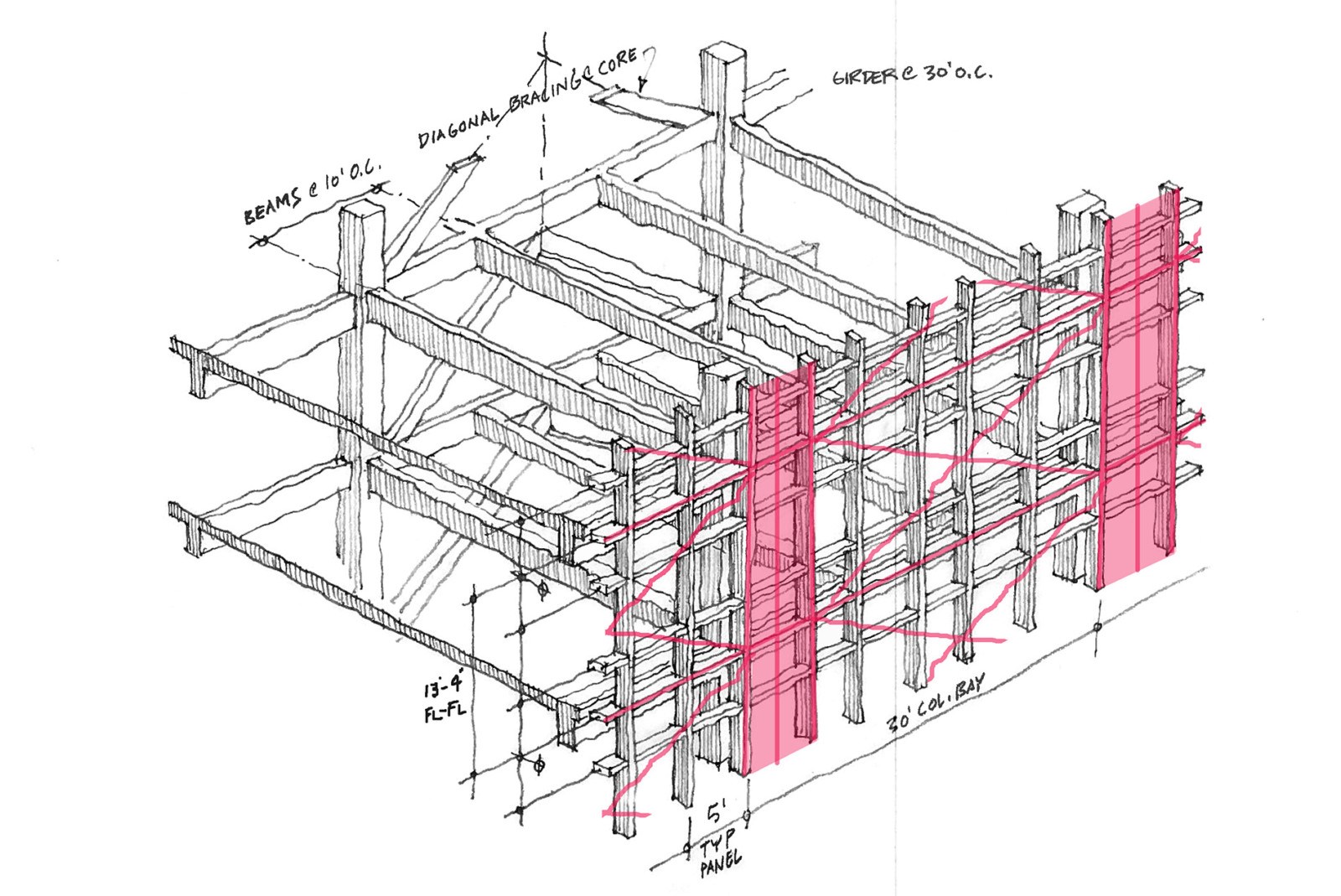Structural eXterior Enclosure, an innovative, load-bearing hybrid curtain wall design, has shown in modeling to reduce life-cycle costs of a high-rise office tower by more than 20 percent (compared with traditional frame buildings) and improve overall U-value of the facade by 25 percent.
Designed by an interdisciplinary team representing HOK’s expertise in facades, architecture, structural engineering and sustainability, Structural eXterior Enclosure was recently named a finalist in the Metals in Construction Design Challenge, a juried competition for ideas that minimize a building’s embodied energy.
John Neary, senior facade specialist in HOK’s New York practice, first began exploring the idea for a new type of load-bearing curtain wall more than a decade ago. The concept that he and the HOK team designed greatly reduces embodied energy of construction materials by replacing the aluminum in curtain walls with steel. Steel requires roughly one-third the amount of carbon to produce as aluminum. The steel in the structural cladding also allows it to be load bearing, reducing the amount of steel required in the building’s internal framing.
As envisioned, Structural eXterior Enclosure would be a prefabricated, pre-glazed, bay-size, steel hollow structural section (HSS) frame with structural shear panels at the jambs and a single cross-brace of pre-stressed stainless steel rods. The design retains the transparency and depth of a conventional curtain wall, while its steel structure enhances the stiffness of the tower frame under wind load, reducing serviceability-level movement. For parts of a building that do not require greater wind resistance, the team also designed a non-structural cladding panel that uses horizontal rods to connect with the window mullions to take wind load.
As a full-bay panel, Structural eXterior Enclosure minimizes thermally conductive panel joints and limits structural tension rod connections to the column locations. The design further reduces thermal bridging and improves overall U-value by making the aluminum glazing frames just deep enough to hold the glass and isolating the aluminum (with its higher conductivity) from the more energy-efficient steel backup.
Neary and the team based their competition entry on a hypothetical office tower in the greater New York area. Neary says the “X-bracing” is reminiscent of the water towers and their braced frames found on rooftops of the city’s older buildings.
“It’s also reflective of the truss work on iconic bridges and the elevated train lines—some of the most utilitarian and efficient yet romantic structures associated with the city,” says Neary. “Structural eXterior Enclosure’s cross braces and horizontal braces offer a contrast of detailed attachments and rods that, under the flush face of the glazing, creates a minimalistic active facade.”
In addition to Neary, others contributing to the design of Structural eXterior Enclosure included Apoorv Goyal (sustainable design specialist); Zhenhuan Xu and Michael Miller (design professionals); Mark Hendel (senior structural engineer); and Matt Breidenthal (regional leader of engineering).
Related: John Neary: HOK Facade Specialist Discusses High-Performance Structural Skin for Buildings



